Outcome Example of Bio-oriented Technology Research Advancement Institution
Issued on December 1, 2020
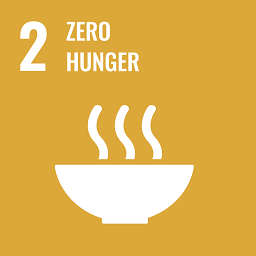

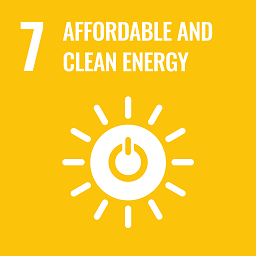
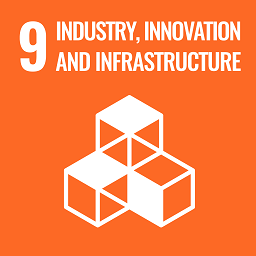
There are many areas in which citrus fruits, including mandarin oranges, are produced throughout the country. Now, what should the orange commercial farms do to create tasteful brand products? One of the methods enabling them to realize their dream is an innovative production technology system called "drip irrigation and liquid fertigation system with year-round plastic mulching (we call Marudori system,MD system). Against the background of farmers' aging and increasingly reduced citrus farms, it is the result of the researchers' enthusiasm to achieve stable production of high-quality, highly profitable citrus fruits. MD system is a labor-saving technology for cultivation management, and may enable for the younger generations to enter the citrus business.
Citrus fruits with high sugar content and appropriate sour taste achieved
The MD system is a technology combining the "mulching" (Image 1) technique, by which orange fields are covered with plastic sheets, and the "drip irrigation" technique, by which a liquid fertilizer drips in small amounts to penetrate into the soil. The MD system was developed as a solution for the problem of weakened tree trunks because of complicated irrigation and fertigation works and dry weather by The Western Region Agricultural Research Center, National Agriculture and Food Research Organization (NARO).
This system is characterized in that the farmers can easily take care of the tree trunks by covering the farm grounds with high moisture-permeable and sunlight-reflecting sheets. A long dripping tubing like a hose runs to carefully supply water and nutrients. If there is no particular water source, water in a storage tank, water in a well, pooled rainwater, or a mountain stream might be pumped up to use as alternative water sources. If a power source is difficult to obtain, solar power might be used.
By installing a timer-operated solenoid valve, a filtering device, and a fertilizer mixer, water and liquid fertilizer can be timely and precisely supplied to the trees. Moreover, by utilizing a simple soil moisture meter to measure the soil's water content, the irrigation amount could be adequately controlled, thus achieving the production of high-quality citrus fruits with high sugar content and appropriate sour taste. Covering the areas around the roots reduces the workload in weeding.
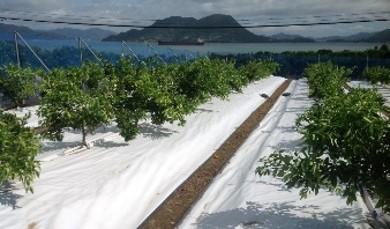
(Supplied by The Western Region Agricultural Research Center, (NARO))
The introduction of the MD system in the seedling planting season may achieve early and high yield. Main expected advantages include 1) production of high-quality oranges with high sugar content; 2) stabilization of the yield; 3) production at low costs; 4) improvement of the agriculture income; and 5) realization of the local-brand by introducing the system of a farmer group. In future, it is expected that a profitable and attractive citrus business will be spread over younger generations.
Won the award of excellence, Innovation Net Award 2020
In cooperation with agricultural experimental stations and producers in each prefecture, the cultivation management manual was prepared, and technology transfer progressed. This system has been introduced in the orange farming businesses in 19 prefectures, including Mie, Ehime, Yamaguchi, Fukuoka, Nagasaki, Wakayama, Hiroshima, and Kagawa.
Recently, the "Group use MD system" has been developed and now spreading. In this system, multiple producer groups jointly use and manage the facilities and water, aiming to reduce the technology-introducing costs and build local brand products.
A series of activities toward the goal of putting the MD system into practical use has been highly regarded. In September 2020, in recognition of their achievements, the Western Region Agricultural Research Center, NARO, won the award of excellence at "Innovation Initiative Network Japan" held by Innovation Net Award 2020, 9th Local Industry Support Program Award Project.
An instructor of the MD system may be sent on request.
Bio-oriented Technology Research Advancement Institution supports the promotion of innovative agricultural R&D in the form of the issuance of travel expenses incurring when researchers participate in technical training courses held by agricultural cooperatives or local governments. In February 2020, two experts at NARO delivered their lecture on the MD system in Tsukumi, Oita (Photo 2).
We accept requests for the dispatch of lecturers to Bio-oriented Technology Research Advancement Institution from local governments, cooperatives, agricultural corporations, public-interest/general corporations, and private companies qualified for juridical personality. Bio-oriented Technology Research Advancement Institution will cover the travel expenses and daily allowances of the lecturers. Please feel free to contact the Planning Dept, Bio-oriented Technology Research Advancement Institution, if you would like us to dispatch a lecturer.
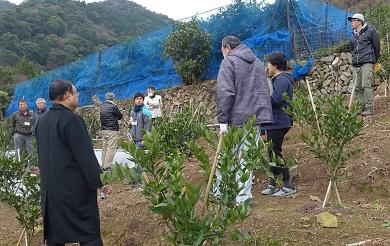
MD system class
- For more information on the dispatching program, please visit:
http://www.naro.affrc.go.jp/laboratory/brain/contents/fukyu/index.html
Project name
To realize proactive agricultural and fishery industries, the special scheme project on advanced research and development for next-generation technology (Establishment of industry-academia intelligence-integrated innovative technology system)
Project period
FY 2014 to 2015
Title
Development of a labor-saving and high-quality citrus production technology system using the MD system and ICT, and the demonstration of farmland improvement technology for realizing the system
Leading research institute
The Kinki and Shikoku Agricultural Research Center, NARO (currently The Western Region Agricultural Research Center, NARO)
